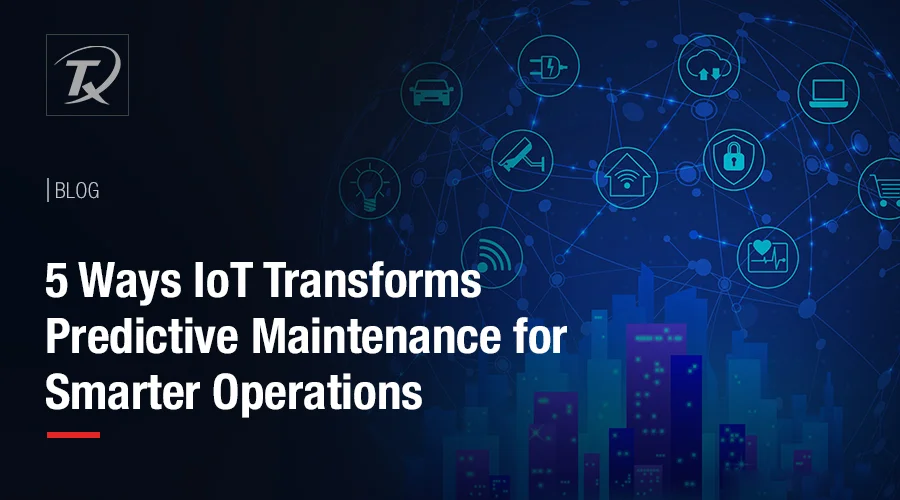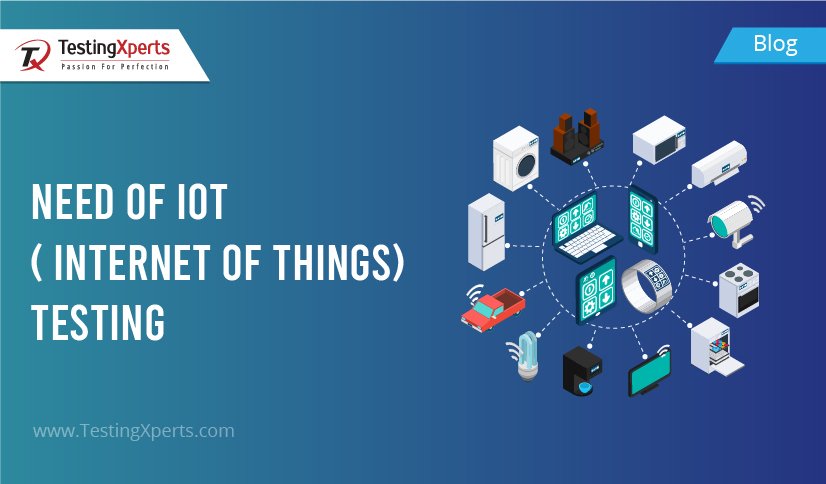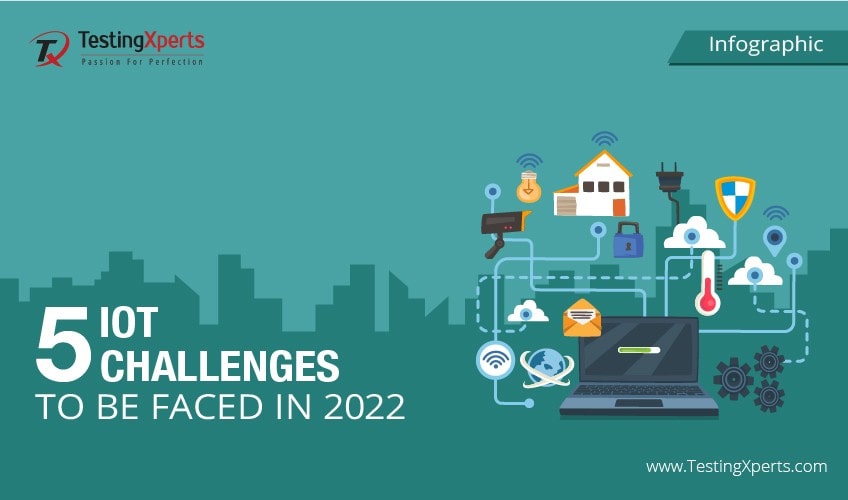
- IoT in Predictive Maintenance
- IoT-Powered Predictive Maintenance Vs Preventive Maintenance
- Ways IoT is Transforming Predictive Maintenance?
- Challenges & Considerations in IoT Predictive Maintenance
- Summary
According to a report, unplanned downtime cost the world’s 500 biggest companies 11% of their annual revenues in 2024, which was $1.4 trillion, equivalent to the annual GDP of a major industrial nation like Spain.
One way to reduce this cost is by using IoT in predictive maintenance. Businesses should leverage tech solutions like AI and connected sensors to identify asset conditions and their performance, which will help prevent failures and assist in managing maintenance needs. IoT-based predictive maintenance is necessary for businesses to thrive in the Industry 4.0 era. It will assist with 24/7 monitoring, root cause analysis, and real-time alerts, enabling industries to extend machines and components’ lives, lower service costs and downtime, and improve production rates.
IoT-based Predictive Maintenance

When industries already have SCADA (supervisory control and data acquisition) architecture to supervise maintenance processes, why do we need industrial IoT (IIoT)? To answer this question, let’s first understand what predictive maintenance is.
Predictive maintenance involves using data (historical and current) to anticipate and prevent component failures before happening. Unlike reactive or preventive maintenance, predictive maintenance utilizes IoT sensors to collect data and AI to analyze it for potential issues. Organizations can monitor their requirements health in real-time, make smarter decisions, and reduce the chances of unexpected downtime, which would expand the lifespan of their assets.
In predictive maintenance, IoT sensors help track metrics like pressure, temperature, and vibration and send real-time data to create a base for AI algorithms to work on. Then, by utilizing AI and Big Data, maintenance teams can extract and analyze the SCADA data to gain relevant insights and recommendations.
IoT-Powered Predictive Maintenance Vs Preventive Maintenance

| Approach | Uses real-time IoT data to monitor equipment health and predict failures before they happen. | Follows a fixed maintenance schedule regardless of the actual condition of the equipment. |
| Downtime & Cost Impact | Minimizes unplanned downtime by addressing issues before they escalate, reducing emergency repair costs. | Can lead to unnecessary maintenance or unexpected breakdowns, increasing operational costs. |
| Resource Allocation | Focuses maintenance efforts only on equipment that shows signs of wear, improving efficiency. | Requires servicing all equipment at regular intervals, whether needed or not. |
| Equipment Lifespan | Enhances asset longevity by detecting early warning signs and preventing excessive wear. | May result in premature part replacements or overlooked issues, affecting asset durability.
|
| Decision-Making | Provides real-time insights through AI-driven analytics, enabling smarter maintenance planning. | Relies on predefined schedules without considering actual equipment conditions. |
Ways IoT is Transforming Predictive Maintenance?

Real-time Data Collection for Healthcare Equipment Monitoring
Medical equipment is the core of patient care activities. A slight malfunction can lead to severe disruptions. Generally, technicians conduct regular manual checks on equipment like infusion pumps, ventilators, vein detector devices, etc., to ensure their proper functionality. However, this approach has a flaw: It cannot catch every issue, causing unexpected breakdowns.
IoT enables hospitals to use smart sensors to track the performance and health of their medical devices in real time. They can predict when one of their devices might malfunction and can take action to avoid it. Leveraging IoT for predictive maintenance would reduce system failures and maintenance costs and ensure that medical equipment is always in top condition.
AI & ML for Failure Predictions in Manufacturing
The IoT sensors installed in machinery regularly collect data (performance metrics) and send it to the centralized systems for analysis. This collected data is analyzed leveraging AI/ML algorithms and tools. This helps organizations detect data patterns indicating potential failure chances and predict maintenance timelines/schedules. With continuous learning, ML models become more precise, helping industries like manufacturing predict errors and failures precisely.
Managing Transport and Logistics
IoT sensors are transforming how businesses manage transportation and logistics. They are using these sensors to track cargo conditions in real-time by measuring metrics like location, temperature, weight, and humidity. This helps them reduce the chances of cargo damage, select the best delivery routes, and improve delivery time. In addition, businesses can also use them for fleet management maintenance. Integrating IoT sensors inside vehicles can gather data about their performance, fuel efficiency, etc. This data would help the predictive maintenance algorithms schedule servicing and keep the fleet running proactively.
Smart Homes, Buildings, and Cities
The involvement of IoT technologies in our daily lives is much deeper than one might expect. IoT is integrated everywhere, from smart homes to smart cities, including smart traffic lights, refrigerators, security systems, washing machines, and dishwashers. It also assists people in utilizing energy efficiently and minimizes costs and failures. In smart cities, IoT sensors in buildings help monitor various systems, such as security, air conditioning, ventilation, and power usage.
Remote Monitoring & Reduced Downtime
IoT-powered predictive maintenance enables remote monitoring, allowing businesses to track equipment health in real-time without on-site inspections. Smart sensors collect and transmit data on temperature, vibration, pressure, and other critical parameters, helping teams detect anomalies before they escalate into failures.
Organizations can proactively predict potential breakdowns and schedule maintenance by leveraging AI-driven analytics, minimizing unexpected disruptions. This approach reduces downtime, enhances operational efficiency, and extends asset lifespan, ultimately saving costs and improving productivity. With IoT-driven remote monitoring, businesses gain better control over their maintenance strategies, ensuring seamless performance across operations.
Challenges & Considerations in IoT Predictive Maintenance

| Challenges | Considerations |
| Data Security & Privacy Risks | Implement robust encryption, access controls, and compliance with data protection regulations to safeguard sensitive information. |
| Integration with Legacy Systems | Use IoT gateways and retrofit solutions to enable seamless communication between old and new systems. Ensure compatibility before deployment. |
| Scalability & Implementation | Start with a pilot program before scaling. Invest in cloud-based infrastructure and skilled personnel to manage expansion efficiently. |
| Data Overload & Complexity | Implement AI-driven analytics to process and filter IoT data, ensuring only relevant insights are used for maintenance decisions. |
| Initial Investment & ROI Concerns | Evaluate the long-term benefits, such as cost savings and downtime reduction, to justify the upfront investment in IoT infrastructure. |
Summary
Unplanned downtime is a major financial burden for businesses, costing top global companies billions annually. IoT-powered predictive maintenance helps reduce these losses by leveraging AI and connected sensors to monitor asset conditions, predict failures, and optimize maintenance schedules. This technology transforms industries like healthcare, manufacturing, logistics, and smart cities by enabling real-time monitoring, failure predictions, and efficient resource allocation.
Txs’ IoT predictive maintenance services focus on identifying and fixing potential issues before they become problematic. Our expertise helps businesses optimize application performance, reduce downtime, and enhance operational efficiency with end-to-end application maintenance and support and AI-driven platforms. Contact our experts now to learn how we can assist.
Discover more
Stay Updated
Subscribe for more info




